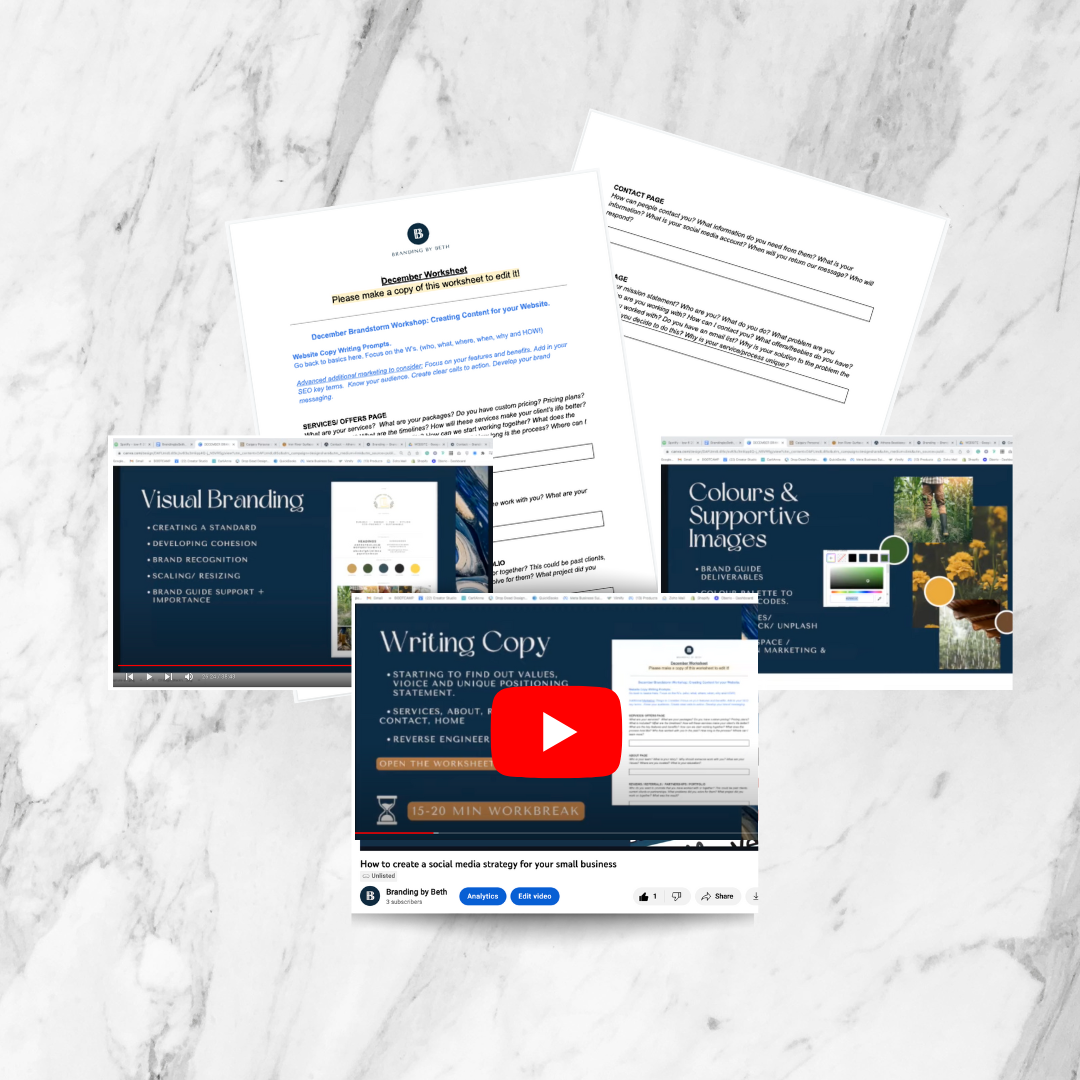How to create content for your new website
Looking for support on what to write and how to create branding cohesion on your website? Start here.
A website is a host for all your business information - which you own. This is a place to connect with your audience, sell your service, and promote your values.
Knowing how to show up online can be overwhelming - so this blog post is to help you understand the exact process I do with my website clients, to get clear on how to implement content and what that content is!
CREATING SYSTEMS
BEFORE, yes I said before, you start even thinking about what you want your website to look like, you need a plan of what will be on it.
Create a folder labelled WEBSITE, in either google drive or on your desktop.
This folder in time will hold all of your website content, images, branding, blog posts and products, and more.
I hate to say it, but we never know when the digital world can flop. So having all of your information first be built offline will allow for quick access and organized systems and relieve that if anything ever happened, knock on wood, your content would be safe.
BUILDING PAGES:
Think high level here as to what you want to showcase on your site. Create a wireframe of the pages that you need and want to showcase.
A simple website is about 5 pages and is set up something like this: Home > Services> Gallery> About> Contact.
Write out what pages you want to be on your website. Then, make a subfolder for each one, and place them all under your main WEBSITE FOLDER.
WRITING CONTENT:
In each subfolder, here you will start a new document where you will begin to write out your copy. It's good practice to brainstorm, write and edit all your copy in a document first before you add it to your site.
*Tip - Work on your homepage last!
Your homepage is a highlight reel of all your other pages. So I like to leave it to the end when I can pick al the best parts from the other pages to showcase with ease.
Things to think about:
- Answer all the W’S. - Who, What, Where, When, Why and How.
-Keep things simple
-Don't forget who you are talking to! Your ideal audience might not know all the lingo in your business.
Questions to cover:
Who are you?
Who do you serve?
Where are you located?
Why should they buy from you?
What makes your services/ offerings unique?
Looking for more support?
WORKSHOP: WHAT TO PUT ON YOUR WEBSITE
$19.99
Create key written copy and on-brand content for your website. Learn how to apply branding to your website and what key writing prompts you NEED to tell your unique story to your target audience.
Workshop Includes
60-Minute Recorded Workshop
2-Page Worksheet Access


